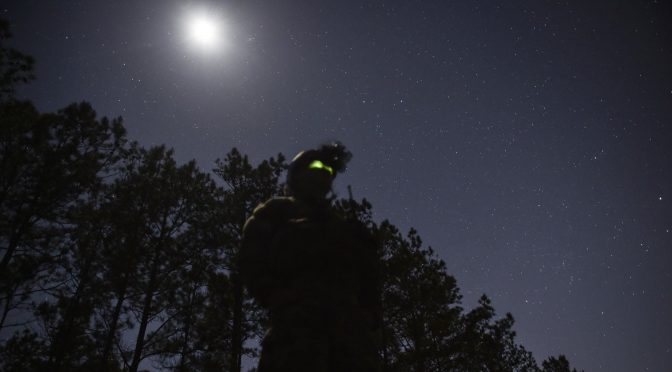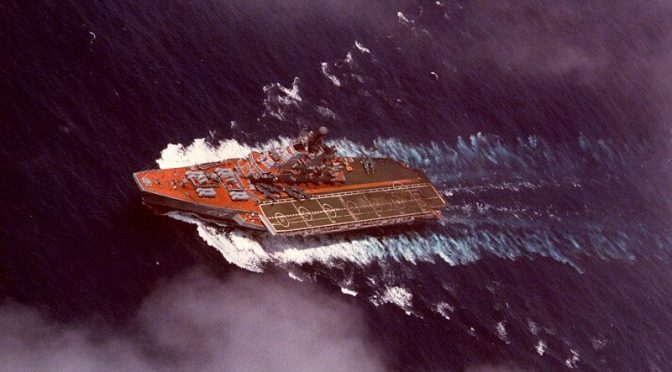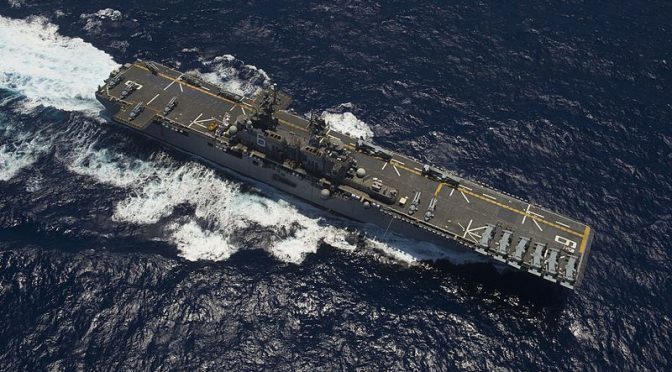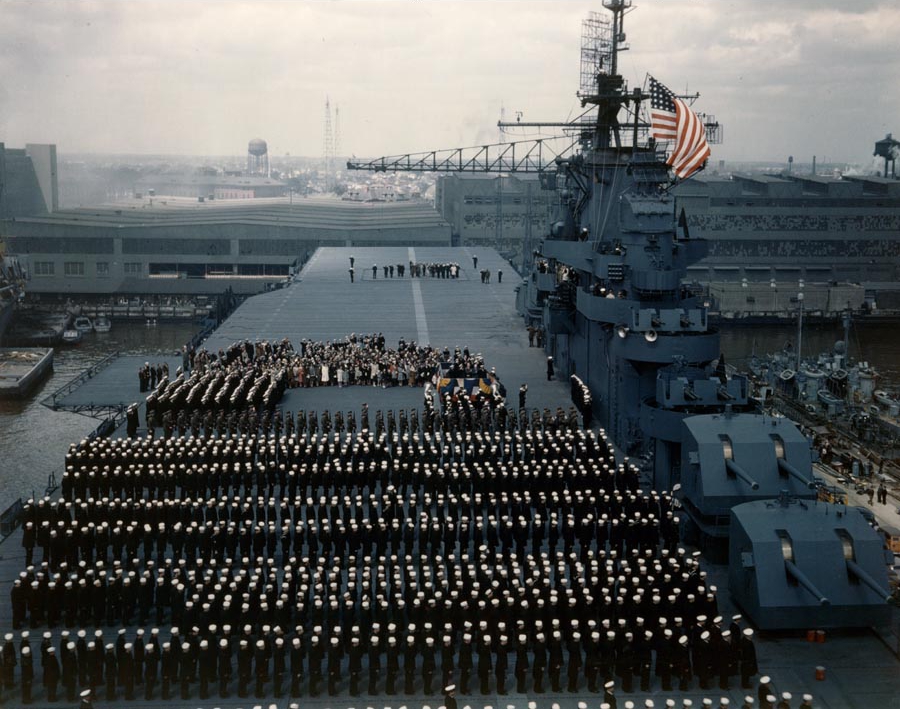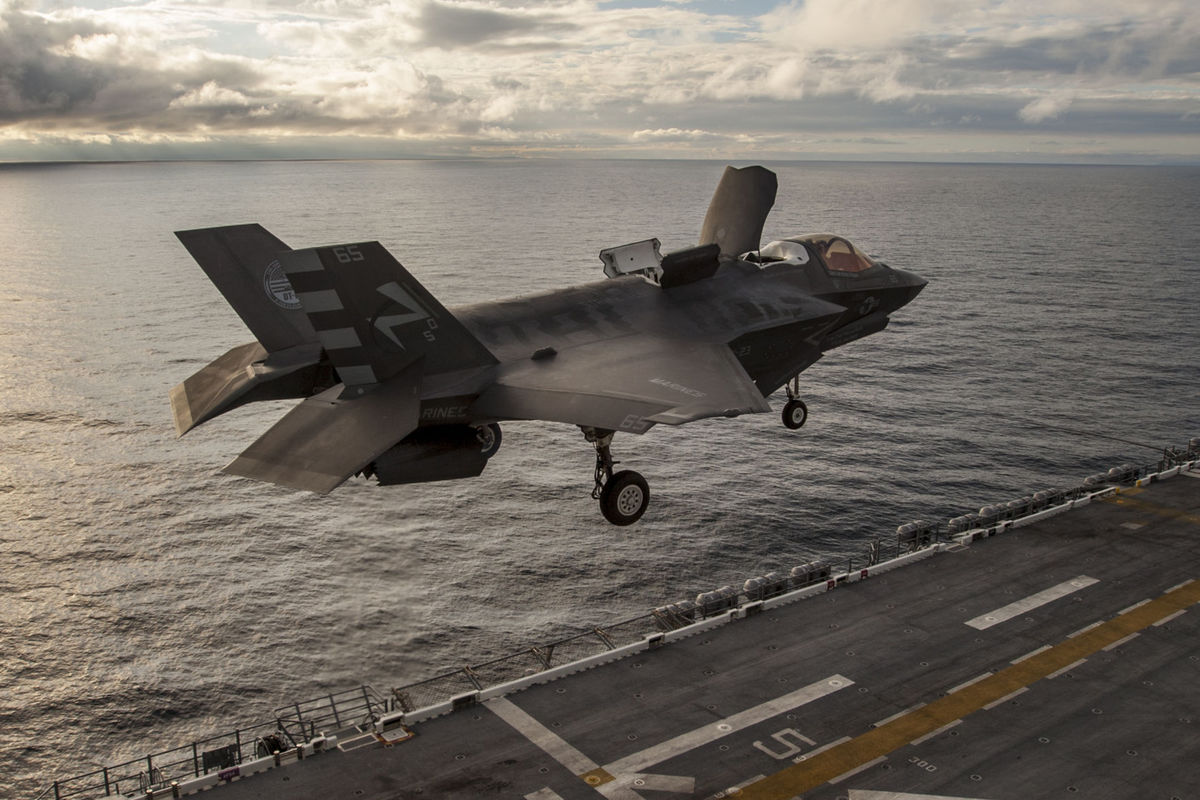Future Capital Ship Topic Week
By J. Overton
Introduction
A snowstorm hits the coastal city of a near-peer competitor. That country’s largest naval shipyard, housed in this city, communicates via its own web site and through the local commercial media that all non- essential navy personnel should stay home until further notice. It also releases notice that a ship homecoming, due to happen the next day, will be postponed until the weather improves.
That evening, fire breaks out on a dry-docked submarine in that shipyard. The minimal staff on-site fails to notice or report the fire until the next morning. By then, the submarine and dry dock have suffered massive and horrendously expensive damage.
That morning, packages and envelopes are delivered to facilities at each of the other major naval bases in the country, all containing white powder and threatening notes. Due to an abundance of caution, the buildings in which these packages were opened evacuated, locked down until a thorough test of the substances can be done. Backpacks and unattended bags found near the entrances to the bases cause further alarm, and all of the country’s naval bases are put on reduced manning until the suspicious packages are investigated. Bomb threats call in to every coastal base at noon that day and prompt further panic, and a decision is made to get all ships that can underway.
A contracted fuel tanker, pulling in to the nation’s largest fuel pier, loses steerage way and collides with the nation’s largest amphibious ship, then moored at this pier. The damage to both ships, and the fueling pier, causes few casualties, but results in an oil spill and both ships being unseaworthy. The spill shuts down the shipping channel leading into one of the largest bases and commercial ports, backing up cargo ships, and causing the navy ships attempting to get underway to do so with less than optimal fuel requirements. At another base on a different coast, a submarine joining the scramble to get to the safety of the sea reports experiencing an explosion or collision, and sends a distress signal as it begins abandon ship procedures.
That evening, with attempts still being made to respond to the oil spill and the disabled submarine, power outages occur at the navy’s administrative offices, located in a commercial office block in an inland city. Within minutes of the complex going dark, an individual walks to the gate of the navy’s largest communications center, shoots the lone guard, and begins killing watchstanders.
By midnight of the second day, this nation’s leaders are yet are unsure if this mayhem is just a random serious of unfortunate events, or a coordinated, sponsored attack.
In the early hours of day three, a naval jet crashes just after taking off from its base, landing in a civilian community and, it seems, starting a quickly-spreading forest fire. That morning, this navy’s emergency messaging begins sending out text alerts, telling some sailors to shelter in place, and some that they’re wanted for arrest due to some criminal activity, or that a family member has died. Emails and photos of Navy leadership engaged in inappropriate sexual behavior are sent from navy addresses to news outlets around the world.
That evening, the chief of this besieged, bewildered navy is found dead in his office, apparently from self-inflicted poisoning. His national government is unsure if they are actually under attack, much less who the attacker might be, but they do know that their navy is, at least temporarily, dead in the water.
The capital ship concept may no longer be relevant. Modern navies spend the bulk of their time performing at the softer, fuzzier end of the Range of Military Operations. The seapower that best serves their respective nations may come in the form of counter-smuggling, icebreaking, humanitarian aid and disaster response missions, or in passive-aggressive sea lane interference, none of which require a modern equivalent to an Iowa-class battleship or Royal Navy Ship of the Line, circa 1781. Even the hard-power naval actions of recent decades have not involved symmetrical actors in surface-to-surface combat. Strikes from off-shore carriers on inland targets or massive and decisive attacks on hopelessly outgunned and outnumbered navies1 have been predominant in this young century.
But if the capital ship ideal is relevant today, or will again be in the future, then first some set of criteria, allowing for both traditional usage and technological advancement, must describe it. First, it would be the most powerful platform in the fleet (however one defines platform, power, or fleet). Next, it would be the most survivable platform in that Fleet, both in having the fewest critical vulnerabilities and in that if the rest of the fleet is lost, this ship could still operate. And finally, its primary objective would be the destruction or neutralization of the enemy’s Navy assets.
What is Capital?
Capital-ship type actions have occurred in the previous few decades, but not usually in a way that they would be recognized as such. Rather than envisioning what a future capital ship would look like and what technology or capabilities it would have, one instead can assess some of recent examples of when a human-directed action or natural obstacle has caused significant damage or destruction to a platform or facility of the contemporary world’s most powerful Navy.
The most egregious example of an entire first-rate navy’s first-rate ship being damaged beyond repair during this time period would be that of the fire on the submarine USS Miami. Set while the submarine was in dry dock by a shipyard laborer who apparently just wanted to go home early, it resulted in the total loss of an attack submarine.2 An extremely expensive platform, designed for stealth and survival under the harshest conditions of war and the natural environment was taken out permanently by a lone actor using the most basic technology (fire) with effectively no planning, particular expertise, or financial cost. Other losses or severe damage to U.S. ships and submarines in the last decade have come from collisions with uncharted undersea mountains, reefs, and other ships.3 Naval shore facilities in the U.S., where most of the Navy’s platforms and people spend most of their time, have been shut down for varying periods of time by bomb threats, anthrax threats, and gunmen, none of whom seem to have been carrying out the work of an organized group or nation state, nor to have been done with significant foresight or cost outlay.4
More traceable or kinetic actions have taken place against Navy assets, with near-misses by drones and jets, attacks from waterborne improvised explosives devices, and computer system hacks likely from state actors. 5 Other threats and actual criminal acts, using commercial, off-the-shelf technology, have been used to disable or interfere with the operations of extremely complex, expensive platforms, though thankfully none has yet caused catastrophic results.6
These navy-disabling actions share certain salient characteristics:
– The offenders were either lone actors, or were part of a network that was difficult to track or had a plausibly deniable connection to the offending action.
– The offender’s Center of Gravity and critical vulnerabilities were either not present at the site of action.
– The damage they caused was with commercially-available, cheap or at-hand technology, or natural-occurring obstacles, effectively exploiting the critical vulnerabilities of their target.
Amalgamating elements of the often-accidental events mentioned above into a set of characteristics and capabilities – and adding those to capital ship criteria – yields a near-formless concept that can destroy or mitigate the world’ foremost naval platforms.7
If the stealthiest and best-armed ships can frequently be tracked and detected, and as illustrated, have times of increased vulnerability during maintenance or restricted maneuvering, then the most powerful platform in the Fleet would not be a ship. It would be a small team, networked without a formalized, exploitable communications network, with their leadership, and perhaps all but one team member, safely-distant from the actual area of operations. The individuals on this team may not all know each other, and would not all know the full details of any particular operation, only a particular actions or times which triggered particular phases they would begin or execute.
Their lethality would come from attacking the critical vulnerabilities of modern fleets such as their long logistics tails and extensive, complex network of support and maintenance, be that from sabotage, hacks on navigation or fuel systems, compromising workers, or other any other method which brought about the desired end state without the undesired risks and attribution.8
An overt strike by a ship against a similar target would invite a reciprocal strike if possible, and if not, then other elements of the enemy’s national power would react. A small footprint with a connected human network would be the most survivable platform that could perform its mission. It would be able to strike before the adversary was aware that hostilities had commenced, and even then, the adversary still might be left in doubt as to whether or not a conflict had begun, or with whom it was being fought. And if it was attacked or compromised, its center of gravity would be distant and dispersed, leaving it a far more difficult “ship” to sink than the metal hulls it was after.
A few people with skills at commercial drone pilotage, subterfuge and sabotage, and cyberwarfare connections would in no way be available to carry out the range of missions in the Design for Maintaining Maritime Superiority or even the more-focused update of a Cooperative Strategy for 21st Century Sea Power. Many of those require amphibious ships, hospital ships, and the submarines and aircraft carriers that may pass for today’s conventional version of a capital ship. But if the primary objective of a capital ship is the destruction or neutralization of the enemy’s Navy assets, those symmetrical platforms would be not be both the most effective and most survivable.9 Once they had sufficiently carried out whatever assigned mitigation or destruction was needed, this “ship” would achieve sea denial no less thoroughly than a battleship or aircraft carrier – it’s organic “firepower” would allow for follow-on sea-going platforms, now un- or minimally-contested to operate freely within a space that they could not dominate, physically or politically, alone.
Conclusion
The functions of a capital ship can no longer be performed by a single afloat unit, and the destruction of a near-peer competitor or symmetrical fleet becomes increasingly less tenable with more accurate satellite imagery and more transparent oceans. A future Battle of the Capes, Trafalgar, or a Midway might still be something for which to prepare, but also something which becomes, in the preparation, inconceivable: all sides would be well aware of the others movements and preparations, and likely of their positions and capabilities as well.
The essentials of the scenario at this essay’s beginning have been carried out piecemeal against first-rate navies in the last few decades, and yet have either been random acts of violence and vandalism, of incompetence and natural causes, or haven’t left enough evidence to warrant a hard-power state response. This might illicit distaste in proponents of traditional seapower platforms, so once did steam power, iron hulls, submarines, and aircraft carriers. The need, or possible existence, of the most supremely effective naval platform for its era will not be obsolete for as long as nations and peoples use the world’s finite sea lanes and marine resources. But the idea that this platform must, however, be now and for always a ship no longer holds water.
J. Overton is a civilian writer/editor for the U.S. Navy, has been an adjunct professor for the Naval War College and Marine Corps Command and Staff College, and is a U.S. Coast Guard veteran.
The views and opinions expressed are those of the author and do not necessarily state or reflect those of the United States Government.
1. See The Sorry State of the Ukrainian Navy—and Why It Should Matter to America http://nationalinterest.org/feature/the-sorry-state-the-ukrainian-navy%E2%80%94-why-it-should-matter-21842
Georgian Navy’s Cruel Fate https://www.wired.com/2008/08/georgian-navys/ And of course, during the same time period there have been more conventional attacks on U.S. and other modern Navies…the USS Cole bombing, the probable- torpedoing of the South Korean ship Cheonan.
2. See Torching of nuke sub costs $400 million; Navy’s budget struggles for air http://www.cnn.com/2013/08/07/us/navy-submarine-lost/
3. See, among others, Initial investigation blames Navy for USS Fitzgerald collision http://www.cnn.com/2017/07/21/politics/fitzgerald-initial-investigation-blames-navy/
In 2005, a U.S. Navy Submarine Ran Into a Mountain http://www.popularmechanics.com/military/navy-ships/a24158/uss-san-francisco-mountain-incident/
Navy wants answers after warship, merchant vessel collide http://www.cnn.com/2017/08/20/asia/us-navy-destroyer-collision-singapore/
4. See, among similar incidents, Gunman and 12 Victims Killed in Shooting at D.C. Navy Yard http://www.nytimes.com/2013/09/17/us/shooting-reported-at-washington-navy-yard.html?pagewanted=all
Local bomb squads busy with suspicious package scares http://komonews.com/news/local/local-bomb-squads-busy-with-suspicious-package-scares
2 Contractors Arrested for Bomb Hoaxes at San Diego Navy Base Plagued by Threats https://news.usni.org/2016/12/19/2-contractors-arrested-bomb-hoaxes-san-diego-navy-base-plagued-threats
5. See China is suspected of hacking into Navy site Naval War College systems off-line following network intrusion https://fcw.com/articles/2006/12/04/china-is-suspected-of-hacking-into-navy-site.aspx
6. See Coast Guard warns of laser strikes on commercial ships in the Chesapeake Bay http://www.capitalgazette.com/news/breaking_news/ph-ac-cn-ships-lasered-0505-20170504-story.html Coast Guard targeted by laser pointer http://www.abcactionnews.com/news/coast-guard-targeted-by-laser-pointer
7. See Formless Warfare: An Innovative Concept to Gather More Information, Analyze it Faster, and Strike Harder by Michael Kim and Charles Schultzhttp://smallwarsjournal.com/jrnl/art/formless-warfare-an-innovative-concept-to-gather-more-information-analyze-it-faster-and-str
Some New, Some Old, All Necessary: The Multi-Domain Imperative https://warontherocks.com/2017/03/some-new-some-old-all-necessary-the-multi-domain-imperative/
8. Taking cues from Hassan i Sabbah (“Nothing is true, everything is permitted.”) and Unrestricted Warfare (“the first rule of unrestricted warfare is that there are no rules, with nothing forbidden.”) see A New Generantion of Unrestricted Warfare https://warontherocks.com/2016/04/a-new-generation-of-unrestricted-warfare/
9. Power as defined as adaptability to function, as described by Joseph Moretz in “The Royal Navy and the Capital Ship in the Interwar Period: An Operational Perspective,” xvi.
Featured Image: A Marine Special Operations School student maintains security during Field Training Exercise Raider Spirit, May 2, 2017, at Camp Lejeune, North Carolina. (U.S. Air Force photo by Senior Airman Ryan Conroy)

